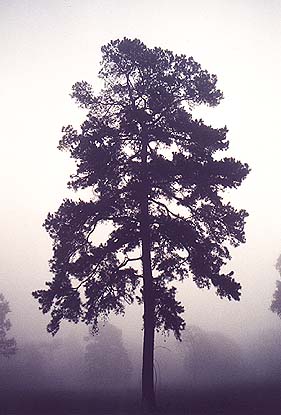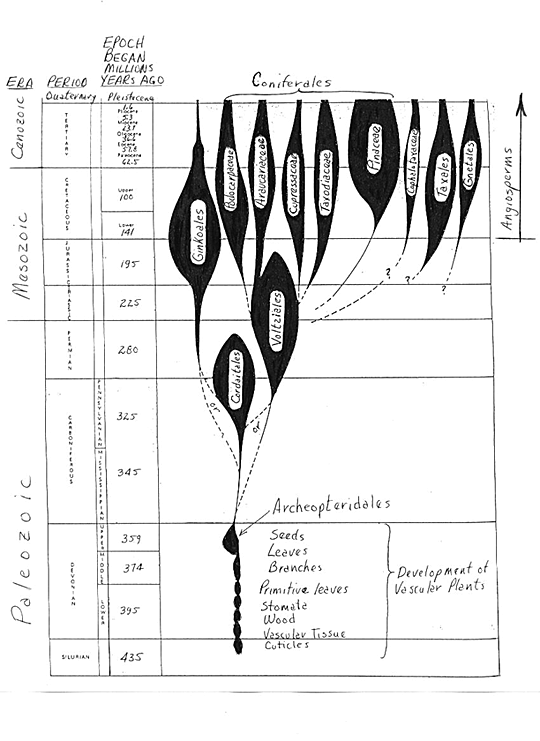
"When you were a tadpole and I was fish,
In the paleozoic time,
And side by side in the ebbing tide
We sprawled through ooze and slime"
-- Langdon Smith, Evolution
Conifer Paleobotany Basics

There are or have been at least six major orders of the subclass Coniferata ("conifers"), four of which remain today.
The first of these orders -- the Cordaitales -- flourished as ground creepers, shrubs, mangroves and trees in the great swampy tree fern forests (which formed much of our present day coal deposits) in the Carboniferous and lower Permian Periods, and probably evolved some conifer precursors (maybe including the Voltziales) and then became extinct.
The second order -- the Voltziales -- flourished during the upper Permian through the Jurassic Periods and was an important transition form, diversifying into all or some of the conifer orders that survive today, before it became extinct.
The remaining four orders that are here today include the Gnetales, which exists as non-tree plants including Ephedra, Gnetum and Welwitscia. Another order -- the Ginkgoales -- exists as a single species, Ginkgo biloba. The remaining two surviving orders -- the Taxales and especially the Coniferales -- account for many shrubs and trees on Earth today.
The precursor(?s) of these orders evolved in the Devonian Period, sometimes refered to as Class Progymnospermopsidae and order Archeopteridales. There is a genus Archaeopitys (=Callixylon) which may be the primordial gymnosperm, but the details and degree of certainty decrease at this great (395 to 345 million years ago) look into the past.
The following diagram depicts the early development of basic vascular plant structure and the probable origin of the conifer orders and coniferales families:
